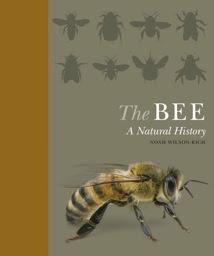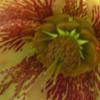
I agreed to review The Bee: A Natural History by Noah Wilson-Rich because I was curious to know more about bees. As a garden blogger who uses social media extensively I have felt bombarded in the last year or so about the demise of the bee and how we have to help them. I am of course aware that recently bees have suffered from viruses but given that the number of bees seem to be increasing in my garden and also in the ‘garden’ area outside my office at work I often feel a little perplexed by this apparent contradiction. I have also started to notice the difference between the various bees visiting my garden so I was hoping the book would help me work out who is who.
The author, Noah Wilson-Rich, as well as being a Biology academic, is the founder and Chief Scientific Officer of Best Bees Company in Boston which supplies gardeners with bee related products; profits from the business fund research into bee disease and immune function. However, despite the academic background of the author the book is very accessible.
The book starts with Evolution and Development at which point I learnt that bees evolved from carnivorous wasps and that bees evolved as a result of plants developing flowers; I had never even thought of the origin of bees before. We then go through the anatomy and biology of bees and I have to admit I got a little befuddled when the book talked about genomics, informatics and the endocrine system! Luckily the book is illustrated extensively with photographs and drawings so if like me you don’t have a scientific background you can still get an idea of what is being discussed!. The third chapter focusses on society and behavior which is really fascinating particularly when you consider, as Wilson-Rich draws to our attention, how the evolution of the honeybee society and reproduction is contrary to Darwin’s theory of evolution. Darwin’s theory of survival of the fittest is completely at odds with the honeybees approach of all new bees in a hive being produced by one female, the Queen. I am going to go back to read through this when I have more time as I find it intriguing.
We then trip through two chapters on Bees and Humans and Bee-keeping which I have to admit to skimming as bee-keeping isn’t of interest to me. Then we move into what was for me one of the best chapters of the book, A Directory of Bees, which looks in detail at 40 of the “world’s most remarkable bees”. These are divided into solitary, bumble, stingless and honey bees and there are some wonderful names out there such as the Sugarbag Bee, the Teddy Bear Bee and the wonderful black and spotty Domino Cuckoo Bee – all from Australia.
The book closes with a chapter looking at The Challenges Faced by Bees. I was interested to see that Wilson-Rich debunks the theory that if bees were to be wiped out humankind would only have four years. Apparently this is a comment ascribed to Einstein although there seems to be little factual evidence backing this up. Wilson-Rich argues that humankind would be able to continue albeit on a dull diet as we would eventually loose all bee-pollinated food crops and would be reliant on wind-pollinated crops such as grains. It was also interesting to learn that in China they are already hand pollinating almond trees due to bee loses. I would stress that Wilson-Rich does not argue there is no real substance to the environmental claims relating to bees but what this book does is to explain the issues in accessible language without an emotional overtone which I often feels comes across in the media at the moment. He closes the book by encouraging readers to plant bee friendly plants, to get involved in Citizen Science by recording what bees they see and lobbying. His last paragraph points us to the success story of the reintroduction of the short-haired bumblebee in the UK.
I would recommend this book to anyone who has a passing interest in bees as its presentation with beautiful illustrations will encourage you to dip in and pick up more information as you do. You can also look up bees from your country and find out what food sources and habitat they require so you can be more targeted in your approach. Many of the facts are intriguing – one of my favourites is that drones do not have a father, but they do have a grandfather; now that does get the brain cells working!

